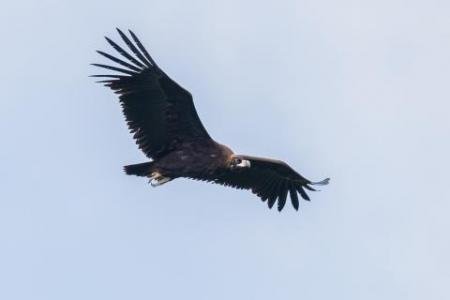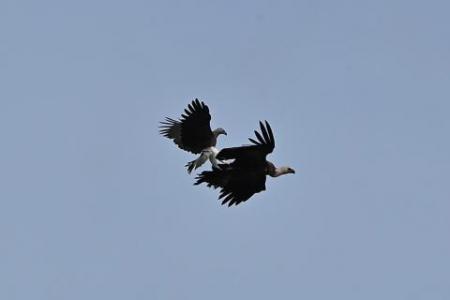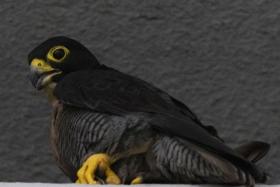Rare cinereous vulture sighted in Singapore for the first time; under vet care at Jurong Bird Park
Singapore recorded on Wednesday (Dec 29) its first sighting of a cinereous vulture, the largest vulture in Europe, Asia and Africa, with bird photographers flocking to to take pictures of it.
The rare raptor, which birdwatchers said is here because it veered off its usual migratory path, was taken into veterinary care at the Jurong Bird Park after it was found in a weakened state at Cornwall Gardens, near the Singapore Botanic Gardens, close to noon on Thursday.
Responding to queries from The Straits Times, Dr Adrian Loo, group director of wildlife management at the National Parks Board (NParks), said the statutory board had taken the vulture in for examination by its veterinarians.
He said: “No visible injuries were found.”
The retrieval of the vulture was captured on a video, which was circulated on messaging app Telegram. It shows NParks staff moving the cinereous vulture, which is seen flapping on the ground.
This is the latest of several unusual migratory bird sightings in Singapore over the past year.
At the Botanic Gardens on Thursday morning, the cinereous vulture was seen congregating with a group of five Himalayan griffon vultures.
When The Straits Times arrived around 9.30am, the police and NParks staff were seen dispersing a crowd of bird enthusiasts blocking the footpath leading to the carpark near the National Orchid Garden.
Singapore Birds Project member Movin Nyanasengeran said the vultures probably arrived as part of the migratory season this year, which takes place between September and March.
“They likely overshot their regular wintering ranges in Thailand and flew almost 1,000km down the peninsula to Singapore,” said the National University of Singapore PhD student.
“The cinereous vulture is particularly noteworthy because this is the first record we have in Singapore, and it’s the largest old world raptor,” he said.
According to Singapore Birds Project, the sooty vulture stands between 1m and 1.2m tall.
The scavenger is native to Europe and northern Asia and can normally be found around forested areas in hills and mountains, said NParks. It spends winters mainly in northern India and the Middle East.
Mr Movin said the Himalayan griffon vultures are likely to be juveniles, which sometimes lose their way on the migratory path.
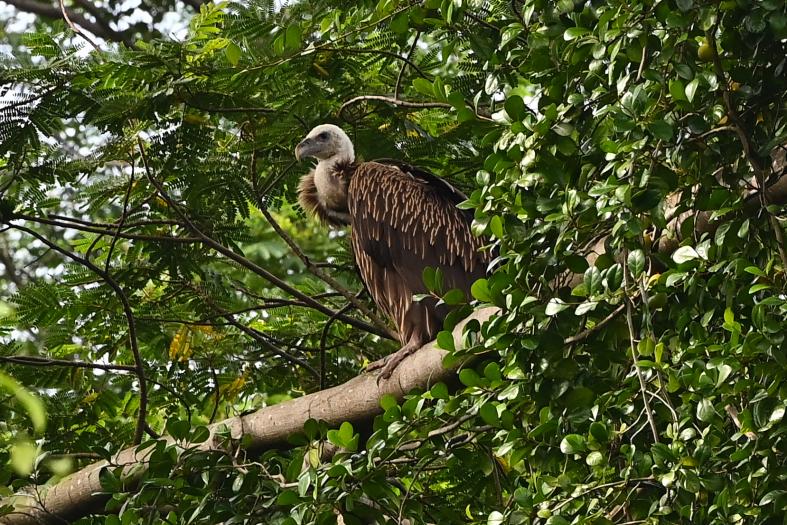
The scavengers have been sighted over the past two years in Hindhede Quarry and the Central Business District.
Both species of vultures are from the same family and can be found in the Himalayas. The cinereous vulture has a darker and more fully feathered head than the Himalayan griffon vulture, said Mr Movin, and is slightly larger.
Birdwatchers said it was likely a lack of food or fatigue that led to the weakened state of the cinereous vulture.
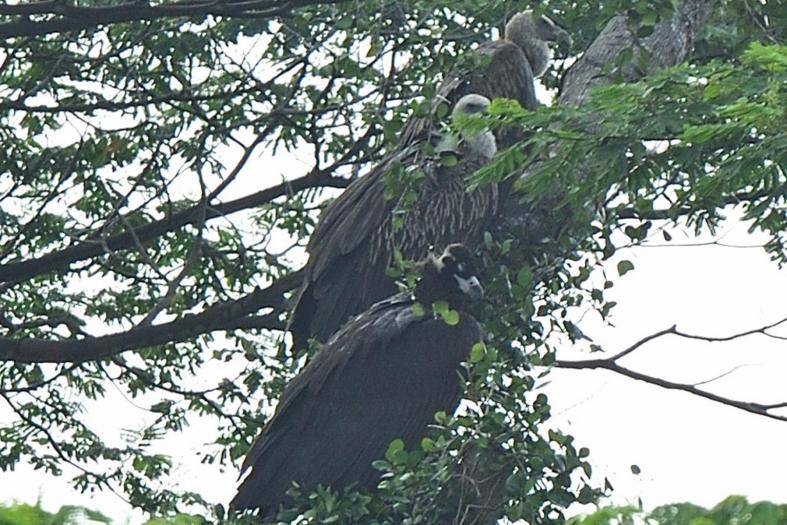
Mr Movin noted that it is rare but not uncommon for such large migrating raptors to crash and sometimes die because of tiredness and hunger.
“Lack of food is especially likely to plague the vulture here since they feed on large carcasses,” he said, adding that the nearest place where people put out food for migrating vultures is Phuket. Thailand is along the birds’ migratory path.
The chairman of the Nature Society’s bird group, Mr Tan Gim Cheong, told The Straits Times that when he saw the vultures on Wednesday afternoon, the cinereous vulture had its eyes closed for periods of time while perched, a sign that it was feeling weak.
On Thursday, it probably landed on the ground for the same reason it ended up in Singapore, said Mr Tan, noting that the young vulture might have wandered to the end of continental South-east Asia in search of something to eat.
He said: “It may have failed to find food along its long journey, and just continued flying until ‘land’s end’.”
Dr Loo added that members of the public should remain calm and observe a vulture from a distance in the event that they encounter the bird.
“They should not approach, provoke, or feed the animal. The public may also contact NParks at 1800-471-7300 to report the encounter,” he said.
Cinereous vultures and Himalayan griffon vultures primarily feed on animal carcasses and are unlikely to prey on people or live animals, said Dr Loo.
The recent record follows a string of national firsts for migratory birds this year.
On Nov 20, a long-eared owl was spotted harassed by crows in Marina East Drive.
On Oct 15, a spotted flycatcher was seen at Kent Ridge Park.
On Oct 9, a plump ashy headed green pigeon was found at the Central Catchment Nature Reserve.
Last year, a study in scientific journal Nature's Scientific Reports found that the warm weather and rich mudflats of Singapore make the country ideal as a winter getaway for many migratory shorebirds.
Get The New Paper on your phone with the free TNP app. Download from the Apple App Store or Google Play Store now

